Brian Meert's Blog, page 61
December 20, 2020
3 Strategies to Becoming a Niche Influencer

DEC. 21, 2020

Word of mouth is still one of the most powerful forms of marketing all over the world. People trust other people they admire more than brands and their sales tactics. That’s why influencer marketing is on the rise. It’s based on authenticity and trust.
To gather an audience and recommend products or services to your followers, you first need to understand who you’re trying to target. Depending on the target audience, the channels and the content format is going to be very different in length, tone, depth and style.
In this article, you’re going to learn three different target audiences and the channels you should choose to reach and grow these audiences. You’re going to learn some actionable tips to get started as an authority or influencer in a particular niche.
Influence in B2B: High Ticket B2B Products and Services
To have an impact in the business-to-business sector, you must build authority around your name. You have to create valuable, expert-level content to build this type of trust.
One of the most common ways of doing that is creating articles and guest posts on different blogs in that particular niche. Having your name associated with niche-specific advice is a great first step for getting your name out there. Similarly, guest appearances on podcasts are effective for creating authority around your name.
Another highly effective way to create authority in a niche is by hosting industry-specific webinars. Webinars are basically live online seminars where the host is teaching the audience a new skill or sharing practical knowledge about industry-specific problems and solutions. The webinar host could also talk about the latest and greatest trends in that industry. After creating your webinar event or publishing an article or a podcast, share it in relevant LinkedIn and Facebook communities.
By hosting webinars, the host is seen as a thought leader and an expert in that particular field. The live element of a webinar gives an opportunity to truly engage with the audience and create a connection. Professional webinar platforms have the features to launch polls and answer audience questions live.
You can also launch live offers during your webinar. One indicator of your influence could be the audience’s willingness to actually buy the product or service you’re recommending at the end of your webinar. However, it’s not always effective to push the sale right then and there during the webinar. If you’re just starting with B2B influencer marketing, it’s often more effective to produce content and give value for free, only asking your audience’s email in return.
The long-term value of gathering email leads is often higher than any short-term sales you can make. Having a large, targeted e-mail list of people who trust your advice is a huge asset. You can leverage that email list in the future to further establish your expertise and authority in that niche. Furthermore, it gives you the ability to recommend products and services to that list in the future.
Influence in B2C: Expensive Consumer Items and Services
Two big commonalities between promoting high-ticket business products and expensive consumer items is that it often takes a lot of in-depth research and consideration before making a purchase decision. Therefore, your produced content should match the expected detail level.
One of the best channels for creating this type of in-depth content is YouTube. The video format automatically creates a lot more trust, because of the added layer of video and audio. These additional layers allow you to deepen the trust between you and your audience.
To be more authentic and trustworthy, the best YouTube influencers are not afraid to talk honestly about the disadvantages of a product or service. They even don’t recommend a product if they truly don’t think it’s any good. This type of openness shows your integrity and makes you seem congruent.
The tech influencer and blogging niche is a competitive one, partially because of the high traffic volume and high price point of tech products. That’s why it’s recommended to start in a narrow niche, address a narrow market and establish your absolute authority in that space. You can always branch out later.
For example, if you’re looking to become an influencer in the wearable tech space, start with “smart watches for left-handed people” or “EarPods for punk-rock lovers”. Really commit yourself to establishing your influence among that target audience first.
Some other “hygiene” factors for YouTube product videos reviews are
high video quality (1080p is a must)
clear audio quality (invest in a professional microphone)
edit your video (music and alternating zoom level help you keep viewers engaged)
show your face (if you’re shy, turn it into a character trait)
speak clearly (if you have an accent, put emphasis into articulation)
It could be quite a significant upfront investment in terms of money (buying the equipment) and time (learning the required video editing tools and presentation skills). However, considering the expected level of content quality regarding these high-cost consumer items, it’s a must. The upside is that once you get going, the rewards are cumulative.
Influence in B2C: Low-Cost Emotional and Impulse Purchase Decisions
The third target audience is consumers and targeted through Instagram and Facebook. The influencers (or brand ambassadors) recommend products and services to their loyal audience and followers. The social media channels are very exploratory, that’s why low-cost impulse products work best here.
The key assets in influencer marketing is your Instagram followers and the engagement rate of your followers. One of the most effective ways to gather more relevant followers is by using hashtags. That’s how you’re making your content discoverable. Posts tagged with locations are also easily discoverable on Instagram.
However, it’s not enough to have tons of followers – they have to be engaged and loyal followers who actually trust you and listen to your advice.
When a brand is doing influencer outreach, they always check the audience engagement rate. The engagement rate determines how many of the people who saw your post actually liked or commented on it. Smart brands also try to determine the audience demographics and interests to make sure they’re targeting the right audience for their brand.
Some other important influencer metrics are:
reach
mentions
hashtags
follower growth (or decline)
For Instagram and Facebook influencers, a loyal audience is the biggest asset they have. That’s why it’s important to use analytics and social media management tools to understand your audience demographics, interests and affinities. When you know your audience, you understand the value of your asset, which gives you leverage to negotiate better deals with brands.
When negotiating a deal with a brand, it’s wise to agree on the terms of the influencer campaign, for example:
Duration of the partnership
Number of posts expected to deliver
Hashtags and keywords used
Type of content (posts, stories, videos)
Message that the brand is trying to convey
Make sure you know the value of your audience and how your audience would identify with the brand. It always helps to have a vision for the campaign to negotiate the best deal.
Summary and Key Takeaways
To be smart about building your influencer profile regarding a specific subject, you first have to determine who is your target audience and what is the product or service you’re selling. From there, you can choose the right channels to create a following and influence that audience of followers.
For B2B products and services, it’s best to write expert articles, appear on podcasts and host webinars. These products are often more complex and require more explanation and examples. When your goal is to sell expensive consumer products or services, YouTube video reviews and in-depth analysis videos work best. YouTube is the 2nd biggest search engine in the world and it’s amazing for long-form content.
The last product segment is low-cost consumer items, which are often bought on an emotional impulse or on a whim. Instagram and Facebook have proven to be the best channels for this type of content. However, it’s crucial to understand your audience first before starting a collaboration with a brand. That’s why you should be aware of your audience metrics, even better if you’re tracking it.
December 17, 2020
4 Powerful Ways to Grow Your Brand with Social Listening
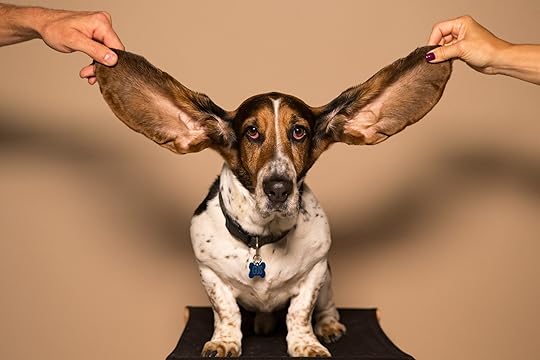
DEC. 18, 2020

Kyle Smith / Unsplash
Do you want to discover an audience, grow your business, drive sales, and get more traffic? Start by asking who your customers are and what they want.
How?
With social listening. Social listening is when you monitor the mentions of your brand, products, competitors, and relevant topics around your business on social media. By monitoring conversations around relevant topics and mentions, you get a wealth of data that you can use to make business decisions. Ultimately, this helps you grow your business.
Here’s how to get started.
Social Listening Improves Customer Service
Social media is a place where you view cute cat videos, post pictures of your awesome life, and rant, sometimes about brands.
Social media has given users a platform to voice their concerns. It’s also easy for customers to reach out to a brand through social media where a simple one-line message suffices rather than waiting for many minutes at the other end of a phone.
Here’s why social listening is so important.
Ilana Wiles, an influencer running a mommy blog (Mommy Shorts), posted an article about her experience contracting home renovation to HomePolish. The company completely botched the redesign that she paid for.

@MommyShorts/Twitter
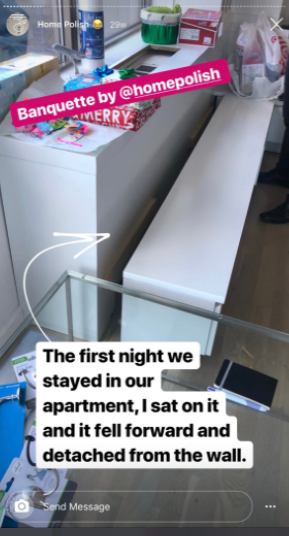
@MommyShorts/Twitter
So, she turned to Instagram and posted a few images of the visibly botched redesign. Her miffed followers responded by commenting on Homepolish’s page for a solution.
The company dragged the issue for months on end, far from solving the problem. There wasn’t even a reasonable response from them or a comment acknowledging their mistake. Eventually, national media got wind of the Mommy Shorts story and picked it up.
What happened next? No influencer wanted to work with HomePolish. A deal they were working on to raise capital fell through. One thing led to another and finally, all these events led to the undoing of a $100 million design startup.
The lesson? When customers complain, listen to them. Customers dislike waiting, and they hate being ignored. As in the case of HomePolish, bad customer service can end up very badly for a brand. The truth is 85% percent of customers stop doing business with a brand because of poor customer service. The sooner you respond and solve the problem they have, the better it is for your you.
Social Listening Generates Leads for your Business
Just because they’re on social media doesn’t stop people from being potential leads. You can target them on any platform.
To generate leads using social listening, monitor keywords in your niche, in and around your brand. Monitor product names, competitor brands, and other keywords that are relevant to what you stand for. On social media, it has now become more common than ever for people to look for buying advice. They are looking for recommendations and suggestions from people just like them.
Every single day users are engaging in conversations around products, debating features, and bemoaning what’s missing. Social media is a place to drop by these conversations and recommend products. That doesn’t imply you can blatantly advertise your products. You can offer a helping hand, and if the situation warrants, offer a product suggestion. This is called inbound marketing and here’s how Airbnb does it.
Airbnb is a startup that provides accommodations to guests at people’s homes. As a company, they’re known for their customer-centric approach. When Dan Wetzel, a sports journalist, tweeted about his dissatisfaction with the hotel room he had to stay in, Airbnb was quick to the rescue. Listening to Dan’s complaint that the room lacked even the basic amenities, Airbnb promptly reached out to him and provided him accommodation options.
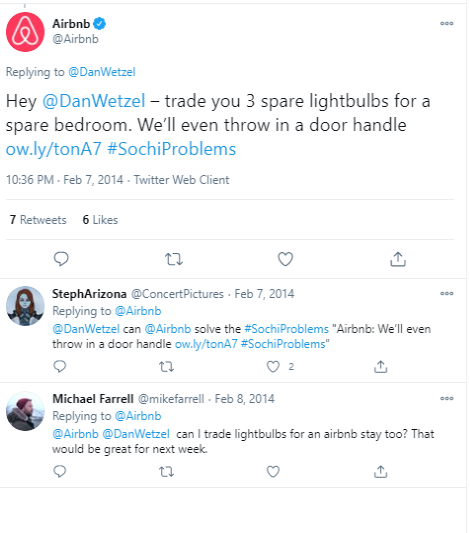
Airbnb/Twitter
The tweet went viral and even received media coverage.
Social Listening Connects You with the Pulse of the Customer
Social listening helps you improve products because it provides real-time feedback. As mentioned earlier, customers on social media have an open platform to voice their concerns. On social media they feely share opinions and reviews about the products they use. That’s why listening for feedback is way better than any survey you can conduct.
Naturally, that makes social media a place where you can hone in on real user feedback. It can give you plenty of customer insights, some of which can be actionable when creating new products or improving existing ones. As a brand, these insights, reviews, and opinions are extremely useful. You can improve your product by adding features and improving upon existing feature sets by listening to customers. This is the exact strategy Go Pro used to launch GoPro Hero 4.
Go Pro improved their product by analyzing online commentary around Hero 3+. The insights they gathered helped them add features that improved user experience. Whatever was lacking earlier got added to Go Pro Hero 4.
For a slightly higher price point, users got a much more compact and lightweight product with double the frame rate. Online discussions often raised the lack of file sharing options. Hero 4 solved this with the inclusion of Bluetooth.
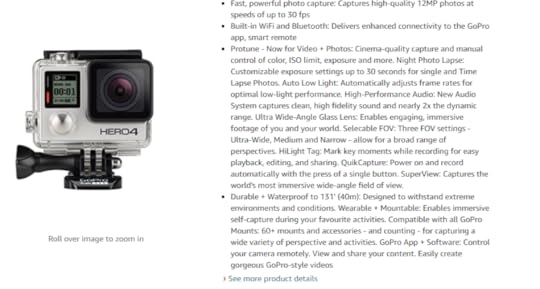
Amazon
These customer insights are valuable because they are so genuine. It’s unadulterated reviews coming directly from users. These insights can help you create a much better product that will sell more and cater to the interests of people.
Social Listening Gives You Content Marketing Ideas
As a marketer, content remains an important factor that drives traffic back to your site. Social listening can help you come up with topic ideas. All writers have a point where they struggle with finding new topics. Social listening can fix that. It’s simple. Start by monitoring niche relevant keywords from your industry or blog. If you sell business proposals, you might try searching for proposal templates, free proposal templates, or website proposal templates, and so on. Run these keywords by Buzzsumo or a social listening tool to get a list of trending articles and content around the topic.
Discover social media discussions around these topics. Based on how your audience interacts with your product, you can create relevant content around it.
Here’s an example. Sole Bicycles sells 15,000 bikes annually. These aren’t your usual run-of-the-mill bikes but high-end and expensive. The bulk of the sales happen through their blog that drives traffic and captures leads. You might imagine them publishing long-form content, guides and articles. They tried publishing in-depth guides and checklists for some time. It didn’t work. They decided to listen to what customers were saying with the help of social intelligence tools and found out what they were interested in. So instead of minting new blog posts, they started releasing mixtapes that these users could listen to when cycling. The strategy worked and generated a lot of new users for the company.
Conclusion
Social listening helps you understand who your audience is. Social listening helps you understand your marketing campaigns better and tells you how you can best reach them and create value.
By George Mathew
December 16, 2020
How to Promote Your Food Delivery Business on Instagram

DEC. 16, 2020

Jon Tyson / Unsplash
When Instagram first popped into the scene in 2010, it looked the same as any other social media platform. Full of pet selfies, food images, and much more. Fast-forward to 2020, and Instagram is considered one of the best marketing tools for business owners, with enticing features such as advanced analytics, shoppable Instagram posts, live Stories, and IGTV.
Food is a topic that does well on Instagram. Before jumping to marketing, you must be clear with your goals. For the food delivery business, your aim can be the following:
Displaying your various cuisines
Increasing awareness of your business
Increasing brand loyalty
Advertising
According to the latest report, more than 70% of Instagram users take action such as visiting a website, downloading an app, or making a purchase after looking at a brand’s ads on Instagram. No doubt, Instagram is one of the best and popular image-sharing apps across the world right now and the perfect social media tool that your food delivery business should take into consideration because it has the potential to turn prospects into buyers. But how do you promote your food delivery business on Instagram? What are the hacks? That’s where this guide comes in. Let’s get started.
Switch to Instagram Business Account
Before you start promoting your business on Instagram, make sure you have created an Instagram business account. In 2019, Instagram announced a new business profile type for businesses that offers similar features to Google My Business. It means in your profile, you can mention details such as address, hours, contact number, email ID, and website or app link.
You need to fill out each and every information as it offers multiple benefits such to your food delivery business such as
Along with driving traffic to your website, your followers can click on the CTA button and easily download food service delivery apps, such as the ubereats clone app, to get in touch with you or place an order.
You can easily access analytics tools known as Insights, where you can see impressions and convection on your posts.
Within a business account, you can also create and run Instagram ads.
A business account will look more professional compared to a normal account, so create it as soon as possible if you have been using a personal account.
Hashtags Matters, Seriously
Instagram marketing is all about eye-catching and unique hashtags. You need to find relevant hashtags that reflect your brand and convey a beautiful message. Hashtags have become a uniform way to filter content on social media platforms and enable users to explore content and accounts to follow. Here is a list of popular food-related hashtags that you can use to get more engagement:
#foodporn
#food
#instafood
#hungry
#happyhour
#yummyfood
Above are the most used hashtags; however, you can choose whatever fits your food business. For instance, a well-known coffee brand, Starbucks launched a contest where they asked users to customize their cup designs using #WhiteCupContest. The campaign got popular and received maximum engagement. It means using relevant hashtags is a best practice for the food business.
Post Consistently
The sweet spot for posting is a consistent three to four posts a day. You have to be active when it comes to posting content on Instagram. It will keep your followers engaged and connected with your food business. By doing this, your feed also stays fresh and updated, and you have more opportunities to attract eyes to your account.
You can post pictures and short videos on Instagram every day. Moreover, you can also post recipes and behind-the-scenes stories of your food delivery business in Stories. You should know the best time to post on Instagram. Tools such as Buffer, Sprout Social, HootSuite, and Zoho Social will hone your content delivery strategy and let you monitor your follower’s activity altogether.
Post Scrumptious Photos of Your Signature Dishes
A mouth-watering picture is worth a thousand words and a video surely worth a million.
Instagram is all about posting pictures and images that grab the attention of users and compel them to order. Instagram is the most visual social media platform that allows people to publish quality pictures with modern filters.
For a food delivery business, it would be beneficial as visual content brings more customers and leaves a long-lasting impact on followers than textual content. Make sure you publish beautiful, appetizing photos on your feed that will easily drive sales and boost revenue.
Bonus Tips
There are enormous ways to promote your products and services on Instagram, but you are advised to create a strategy with clear KPIs (key performance indicators). Here is a list of several bonus tips and strategies you can use for your food delivery business to give a head-start.
Ensure your feed looks aesthetically pleasing by delivering high-quality content.
Use similar filters, choose an appropriate theme, and keep your profile layout consistent.
Use hashtags your competitors use and measure success.
Get started with ads for better results.
Don’t forget to add CTAs.
Post content regularly. The more active you are, the more your account will appear on the Explore page.
Growing Followers on Instagram Isn’t an Overnight Achievement
Instagram has now become very fluctuated, above are just a few tips and ways you can use it to push your social media marketing forward. The above tips will let you manage your profile for your food delivery business on Instagram and give you another chance to create a strong online presence.
By Deep Moteria
3 Ways to Ensure Your B2B Marketing Strategy Is 2021 Ready

DEC. 16, 2020

Moritz Knöringer on Unsplash
Future-proofing marketing strategies for the upcoming year is something that B2B marketers do without fail, and it’s a crucial task in their marketing arsenal. However, considering the unpredictable events of 2020, preparing for 2021 looks quite daunting. But in such uncertain and scary times, robust preparation can be the only key to achieve desired business goals!
Now, B2B marketers have learned how to handle and bring traction when surviving in the “new normal,” but finding viable ways of supporting evolving buyers’ journeys and dynamic revenue goals is something they still need to figure out.
To design a holistic B2B marketing strategy that is ready for 2021, marketers need to pause, reflect, learn from their mistakes and plan for the year ahead because guesswork wouldn’t help in a pandemic-hit economy!
Despite the uncertain B2B landscape of 2020 and things looking scary for 2021, you can leverage various techniques to make your marketing strategy ready to cope with the unpredictability that lies in the future. Before diving deep into those measures, how about brushing-up our B2B marketing basics!
Is Creating A B2B Marketing Strategy Tough?
B2B marketing is also known as industrial marketing, where the fundamental purpose is to promote an organization’s products and services to other companies and not individuals. Creating a robust B2B marketing plan is quite challenging and way more complicated than the B2C landscape because more people engage in the buying process. Decision-makers and B2B sales require deliberation from prospects. For B2B marketers, generating leads and validating the ROI of their marketing efforts are the two crucial challenges!
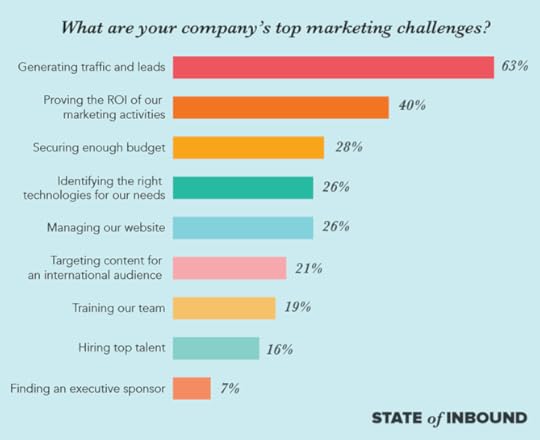
Source: Sales Hacker
Looking at the challenges B2B marketers witness in regular days, it would be difficult to assess what kind of hurdles lie in their path of building a marketing plan for 2021. However, a cautious approach and taking small steps to prepare and face the year ahead with confidence could be the game changer!
Irrespective of the challenges, creating a proven B2B marketing strategy framework that’s 2021 ready is crucial for identifying your ideal customer profile, best marketing channels to generate leads, and most prolific market segments.
Many B2B organizations create a marketing plan comprising 40-page documents emphasizing different aspects such as their mission, vision, and values. However, it makes things messy, and nobody has a clear idea of what’s going around! With 2021 around the knocking at the doors, you can’t afford to leave any stone unturned!
What Are the 3 Ways to Ensure Your B2B Marketing Strategy Is 2021 Ready?
As your B2B organization is still absorbing the aftershocks of the global health crises, we’ve put together a couple of proven tips to ensure your B2B marketing strategy is ready for 2021 and capable of securing the ultimate results.
For creating a holistic B2B marketing strategy, you should work in three phases that are as follows:
Pre-planning: Identify what you need to do before planning your 2021 B2B marketing arsenal.
Planning: Based on the insights of the pre-planning phase, you should cherry-pick your B2B marketing strategies.
Executing: Determine how you will implement your B2B marketing strategies.
Now, each of these three phases will have separate actions and measures. Let’s look at them in detail.
I. Pre-Planning Phase
This phase is all about doing pre-planning so you can pick the most relevant B2B marketing strategies for 2021. The crucial steps involved in the pre-planning phase are as follows.
1. Understand your target audience, their preference, and pain points.
When functioning in the B2B landscape, it’s mandatory to understand your target audience; otherwise, your B2B marketing campaigns won’t work in 2021. As a B2B business, you target many people, and your ideal buyers can be both companies or decision-makers.
Try to figure out who you are targeting before moving ahead with your B2B marketing plan by determining details such as:
Company size
Location of the organization
Type of the company
Designation of each decision-maker within the organization
Pain points or problems faced by the target buyers currently

Source: Single Grain
Identifying all of this information about your ideal B2B audience is referred to as a “buyer persona” that helps you create a relevant marketing campaign tailored to suit the customers’ specific needs.
Understanding your target audience and various aspects, such as their inclinations, issues, and behavior, are quite challenging, but you can equip your sales team with one of the best sales prospecting tools, like RingBlaze, LeadFeeder, and LimeCall, to help them boost their prospecting efforts and analyze website visitors to identify ideal customers.
2. Define your B2B organization’s goals.
Nobody does marketing just for the sake of it, as everyone has specific objectives to achieve. Before moving further with planning your B2B marketing strategy, you must define your specific goals. Lack of goals will make your 2021 B2B marketing strategy directionless, and you’ll be unable to analyze if it’s a success or failure.
Analyzing your priorities and establishing clear goals will help you identify what you want to achieve from all of your marketing campaigns in 2021. There are different type of B2B marketing objectives, such as
Increasing email sign-ups
Boosting conversions/sales
Increasing leads
Building brand awareness or market reputation
Increasing newsletter subscribers
While setting your marketing objectives for 2021, make sure that these are SMART: specific, measurable, attainable, relevant, and time-bound. SMART goals aren’t generic but specific to your B2B organization and help you in driving results.
An example of a SMART goal is to increase leads by 30% by the end of the second quarter. This objective has a time limit and can be easily measured.
3. Understand your budget constraints.
Getting an idea of your budget is crucial for designing a B2B marketing plan for an upcoming year. Considering the statistics provided by Marketing Charts, it’s clear that in the B2B niche, there will be maximum spending on various digital channels in 2021.
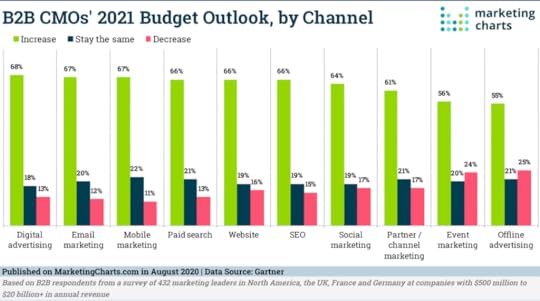
Source: Marketing Charts
The trends and studies give you a direction on how you should plan your budget for the 2021 B2B marketing plan. Based on the market scenario, you can establish your budget by keeping the following costs in mind:
What tools you will need to manage your B2B marketing campaigns in 2021.
Whether you are going to outsource your marketing initiatives or will be doing in-house.
What type of training your B2B marketing employees will require.
Considering potential B2B marketing costs will help you allocate sufficient funds for running effective marketing campaigns in 2021.
4. Dig out the strategies of your competitors
Understanding the B2B market and your customers is crucial, but there’s no way you can ignore your competitors. Doing a competitor analysis is a must for designing a bullet-proof B2B marketing plan for 2021. Your audience continuously judges you against your key competitors and will switch to one of them if they find that you aren’t offering what they’re getting elsewhere!
One of the biggest perks of B2B competitor analysis is that it allows you to keep your finger on your niche’s pulse and lets you dig out which specific marketing strategies will help you boost conversions and drive revenue. Competitor analysis is an integral element of your entire B2B marketing plan.
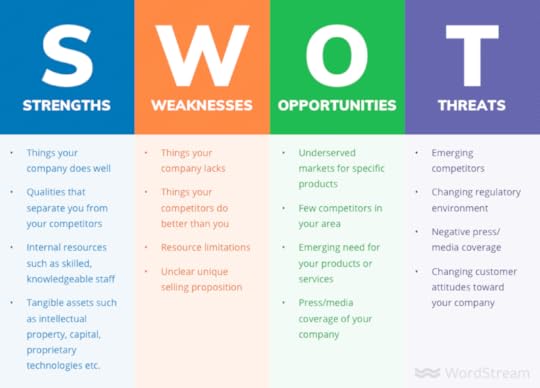
Source: Single Grain
Conducting a B2B competitor analysis will help you in many ways, such as
Identifying your key competitors.
Studying the type of products and services your competitors are offering.
Discovering what your competitors are doing online.
Analyzing the differences and similarities between your and your competitors’ B2B businesses.
Highlighting your strengths, weakness, and unique selling points.
Understanding how your competitors address their customers’ pain points and which strategies they leverage for doing the same.
Studying competitors’ websites to get an idea of their navigation, design, page loading, time, landing pages, mobile experience, etc.
Getting an idea of the advertising strategies your competitors are leveraging.
Analyzing your competitors’ social presence and observing whether you are ranking higher for specific keywords in their comparison.
Studying the specific organic keywords for which your competitors are ranking higher than you.
Observing the type of engagement your competitors are garnering on social media channels.
Analyzing the kind of customer and employee reviews and ratings your competitors get to understand their image in the B2B market.
Performing a detailed competitor analysis will help you refine your 2021 B2B marketing strategy based on your findings. You can identify and use your competitors’ specific techniques to convert more leads and ensure that whatever you are doing, it’s better than your competitors.
You can use one of the best tools for conducting a comprehensive B2B competitor analysis such as Moz, Ahrefs, Majestic SEO, and SEMrush. These tools will help you spot the opportunities and threats you have to consider for keeping your B2B business afloat in 2021.
5. Be flexible in embracing shifting priorities by conducting market research
The year 2020 has been an unprecedented roller-coaster ride for B2B businesses as it demonstrated how rapidly industries could change and even slump altogether. As B2B marketers, one of the essential attributes to learn in 2021 would be being flexible in shifting marketing priorities and understanding how the B2B market might change in the coming time.
With robust market research, you can identify threats before they arise and hit your B2B business hard in 2021. You will get extra time to plan, prepare, and adapt to these potential transitions and come-up with relevant back-up plans. You can also discover potential opportunities and patterns ahead of time, so you have a chance to make the fullest out of them.
But this isn’t going to be as easy as it seems because there are many teams involved in translating B2B organizational goals such as market penetration, sales targets, and market positioning into relevant and useful strategies.
You should leverage one of the best team collaboration tools for keeping all your teams, including sales, customer support, marketing, and the upper-level executives, on the same page. It will help you keep track of the shifting priorities and changes in the B2B economy.
In 2021, when your B2B company will be experiencing the aftershocks of the pandemic, having a flexible approach and observing the changing market landscape will help you in identifying the following factors:
Which B2B business verticals or market geographies are losing momentum?
Which specific B2B business line or products are performing poorly?
Which new avenues for B2B companies may be emerging on the horizons?
You can use advanced technologies such as predictive analytics to create super-targeted B2B marketing campaigns for 2021. Also, by leveraging this technology, you can identify high-intent, in-market leads, and prioritize prospects based on their preferences and pain points.
Having an idea of shifting B2B market priorities and taking those changes into account will refine your marketing plans and reshape your strategies in the direction where the market is leading. So, in 2021 that will be full of endless metrics and measures as a B2B marketer, your responsibility would be to dig deeper into the market landscape and discover hidden truths and trends.
II. Planning Phase
Once your pre-planning completes, you can dive in straight and start picking the B2B marketing strategies. Let’s take a look at the effective B2B marketing strategies that’ll work in 2021.
1. Analyze your B2B website and make sure there are no gaps
There can be nothing worse than having an outdated B2B website in 2021. Your priority is analyzing your portal and ensuring that the design, user interface, and navigation is seamless. Apart from these aspects, two crucial factors need your attention:
Optimize your B2B website’s loading time: Google and end-users both hate slow-loading websites as they offer poor user experience. You can’t take the risk of losing potential leads and search engine rankings in 2021, so make sure that your B2B website loads quickly. You can leverage tools like Google PageSpeed Insights to let you know your website’s current loading speed. Using this tool, you can gain insights on how you can optimize your web portal’s loading time.
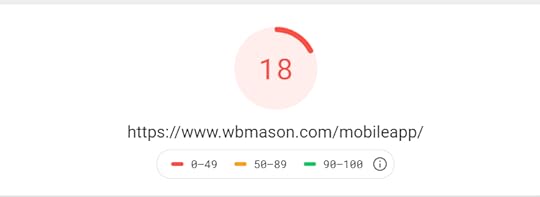
Source: WebFX
Offer seamless website experience to mobile users: Google takes the mobile-first approach to rank websites in search results and what isn’t optimized for mobile devices lag in rankings. So, for grabbing a higher position in search results, you should make sure that your website is mobile-friendly. You can use the Mobile-Friendly Test Tool to analyze your B2B website. Suppose you found that your B2B portal is non-optimized for mobile devices. In that case, you must incorporate responsive design that will make your website capable of offering a seamless experience to everyone, irrespective of the device.

Source: WebFX
2. Embrace empathy while crafting your marketing messages
We dwell in a human-first world where showing empathy is the key to a person’s heart! While dealing with the B2B landscape, you must embrace a customer-centric approach and craft messages accordingly. According to CMI, most of the organizations have customized their messaging strategy to cope up with the pandemic and grab leads even in the challenging times.
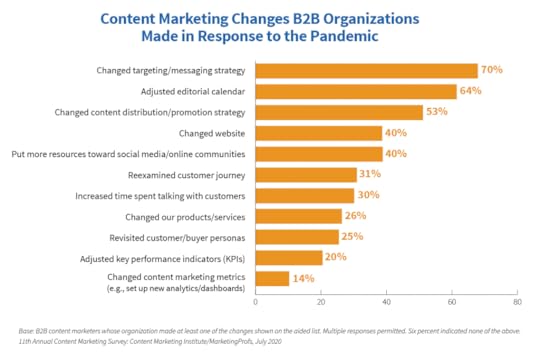
Source: Content Marketing Institute
However, tailoring your marketing messaging depends on your business’s specific goals, but while entering 2021, you must ensure that your messages are relevant and empathetic enough. Craft messages that facilitate customer education and resonate with different buyer segments’ specific requirements to ask for more!
Each of your marketing messages should be capable of hooking the audience and demonstrating how your products and services can let them achieve a desired future state. It will help if you learn the art of compelling storytelling to connect with your audience and build brand awareness for your B2B business.
Avoid talking too much about your company in your B2B marketing messages and structure the stories with buyers in mind.
A couple of pointers that you must keep in mind when crafting B2B messages for your organization in 2021:
Be specific about the issues of your target customers.
Take inspiration from your current customer base while creating and optimizing your marketing messages.
Train your sales team to be solution-focused when dealing with potential customers.
In 2021, you’ll see that building brand awareness will continue to be an effective strategy as B2B companies will be surviving in a virtual world. Your messaging, brand identity, and similar techniques demonstrate both your experience and the specific needs of your customers.
When you’ll embrace empathy and put your customers first in your B2B marketing messages, you’ll be able to build relationships that last and convert maximum leads in 2021.
3. Pay attention to SEO and integrate relevant keywords in your B2B website
There’ll be no survival without SEO for your B2B website in 2021 as 70% of B2B customers perform online research on search engines before choosing products. Without proper SEO, you won’t be ranking higher on search engine results and lose many potential customers.
Integrating SEO in your 2021 B2B marketing arsenal, you need to perform extensive keyword research. Conducting keyword research helps your B2B website rank higher for the right phrases in search engine results to let your target audience discover your business quickly. Ranking high for the right keywords allows you to grab the leads that are interested in your offerings.
Identifying relevant keywords for your B2B business isn’t easy. Let’s assume you have an architecture business in New York; the keywords “New York architects” or “architecture firms in New York” are more relevant to your business than the keyword “architects in New York.”
You can use many tools for performing keyword research, such as Google Adwords Planner, Google Alerts, Ahrefs, KeywordsFX, LSI Graph, etc. For example, for the keyword “architecture firms in London,” Ahrefs shows the following details:

Source: Grow
While exploring your keyword options, you must look for long-tail keywords that comprise at least three or four words because long-tail keywords have a better search intent, and you can figure out what your prospects want.
4. Plan to invest in PPC advertising in 2021
Pay Per Click (PPC) advertising is a paid advertising technique where you invest in creating paid ads that appear on the top of search engine results. The reason why PPC advertising will be crucial in 2021 is that there is a lot of noise in organic search results, and you can cut through the noise and scale your business quickly by creating profitable PPC campaigns.
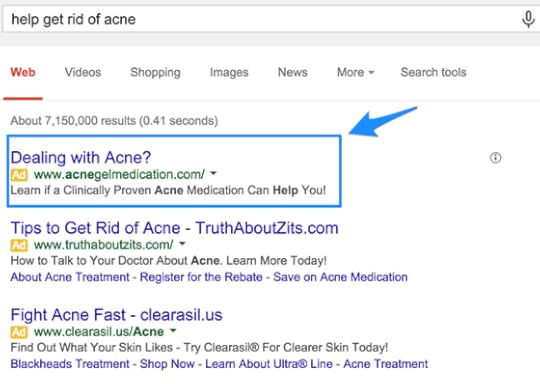
Source: One IMS
Along with putting your B2B brand on the top of search results, PPC ads let you connect with the right audience and measure your campaigns’ progress. When considering PPC as a potential B2B marketing strategy for 2021, you must
Design a customized landing page for PPC ads: Most of the B2B companies use an existing landing page on their portal as the target page for their PPC ads, which isn’t a good idea. You should give a personalized experience to your prospects, and hence having a customized landing page for PPC ads is crucial. A tailored landing page delivers relevant information to the leads via PPC ads and helps them keep engaged.
Leverage Long-Tail Keywords: Keywords are the backbone for PPC ads, just like SEO, because when a prospect types a relevant keyword in search, it triggers your PPC ad to appear in the results. Paying attention to long-tail keywords can help you get the most out of your B2B PPC campaigns. Long-tail keywords are particular, and there’s less competition, which means the cost per click will be lower because not many B2B companies bid on them, and you will get more clicks for your budget.
Take help from ad extensions: Ad extensions help you add more information to your PPC ads and persuade more people to click on them. Various ad extensions, such as callout extensions, highlight your B2B products or services and site link extensions to add more links to your B2B website.
5. Content marketing has become more important than ever
While planning your content marketing strategy for 2021, you should keep in mind that people will be working remotely and are dependent on content even more for finding answers to their problems and relevant information. So, you need to do content marketing smartly for driving leads down in your sales funnel. Remember, not every prospect is equal, so you must keep a few pointers in mind while planning your B2B content marketing initiatives for 2021:
Create a range of content pieces: Creating only one or two types of content won’t help you in 2021. Still, you have to broaden your perspective and develop various content such as case studies, blogs, sales sheets, infographics, videos, eBooks, guides, etc., to appeal to different decision-makers in your B2B audience base. You can create engaging videos with online video templates that you can easily customize by adding sound effects, music, text, motion, and exciting animations. Moreover, podcasting is one of the rapidly growing forms of content that’s extremely powerful when it comes to generating B2B leads. Podcasting helps you know more about your target audience by sharing insights, building healthy relationships, and making them thrilled to know your B2B brand. So, podcasting is a must-have in your 2021 B2B marketing arsenal!
Come up with stories that align with your users’ intent: If your content fails to match your search intent, you won’t be driving any leads. Search intent is the art of understanding what users expect to see or read when they look for a particular topic. It will help if you research what others have written about a particular topic when creating a similar piece by searching for the seed keywords for that topic. It will allow you to create content that offers relevant information to the target audience. To make your stories more fun, you can leverage animation software to create animated GIFs and grab the target audience’s attention. It makes your copy visually appealing and lets you gain an edge over your competitors.
Make a habit to post content regularly: If you aren’t publishing content regularly, you are losing many potential buyers as there’s no option for them to discover your B2B business. Posting quality content often will help you drive more traffic to your B2B web portal and build a loyal audience base from where you can grab leads quickly. However, handling various content formats and posting them regularly on different channels, and coordinating with guest publications isn’t a cakewalk. A content calendar can help you in planning your 2021 content publishing and let you stay on track. With the help of an editorial calendar, you can keep all your team members and guest bloggers in one place, do follow-ups on time, and meet deadlines to ensure that every content piece you produce is high-quality well-timed.
6. Add social media and video in your 2021 marketing arsenal
There were 3.8 billion social media users in 2020; however, as per Statista, half of the globe is anticipated to leverage these channels by 2021. Massive, isn’t it? Being B2B marketers, is there any way you can take advantage of such an extensive social media customer base?
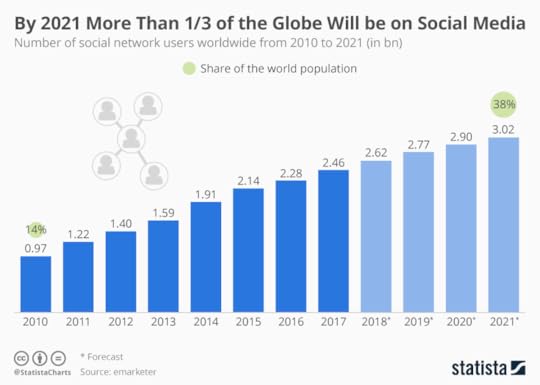
Source: Statista
You can get an idea of the crucial marketing theories and apply them in your 2021 B2B social media campaigns that drive maximum clicks, conversions, and engagement. Social media channels allow you to connect with your target audience and give them real-time updates related to your business and industry or share knowledge, such as:
Communicate updates on new content pieces or blogs
Announcing new and updated service offerings
Sharing industry expertise with the target audience
Updates about any changes to availability or operations of your B2B organization
Conducting FAQ sessions with the target audience for solving their pain points or doubts
One of the most effective ways of leveraging social media channels for grabbing B2B leads in 2021 can be live videos that have been dominant on Instagram and Facebook since 2016. It’s a fact that live videos aren’t a new trend, but in 2021, they’ll become a valuable asset for B2B marketers!
LinkedIn has been one of the best social media platforms for B2B marketers because it helps build long-lasting business relationships with prospects. On LinkedIn, you have the liberty to target people based on their location, occupation, expertise, company, designation, etc.
On LinkedIn, you can find most of the entrepreneurs and C-suite executives engage professionally. You can listen to what these higher-level people discuss and what professionals who might need your products or services are talking about on this platform to figure out their preferences and pain points.
Some of the most useful features for B2B marketers are LinkedIn InMail and LinkedIn Sponsored Content and videos. By following the best LinkedIn video tips, you can boost engagement by making your content super enjoyable and standing out on your followers’ feeds.
Producing more video content in 2021 can help you increase your B2B brand awareness and conversions. According to Grand View Research, the market-size of live video streaming will evolve at a rate of 20.4% from 2020 to 2027 due to advanced technologies such as Blockchain and Artificial Intelligence (AI):
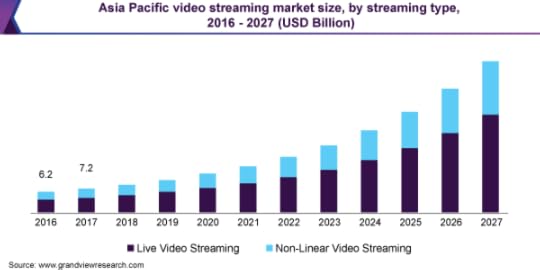
Source: Grand View Research
Recently, LinkedIn has introduced its live video feature that allows B2B brands to connect with potential buyers and broadcast their content in real-time with their network for:
Sharing exciting company updates
Offering industry advice
Answering their questions by hosting Q&As
Providing live event coverage
Revealing a new product
Offering how-to videos or product demos
Giving behind-the-scene glimpses of your organization
The best part about doing live videos for your B2B brand is that there are boundless opportunities to leverage different social media platforms in unique and groundbreaking ways.
Live streaming is here to stay, and leveraging live videos in 2021 will allow you to interact with your target audience in real-time and develop deeper connections for moving potential leads down through your sales funnel.
However, keeping your social media profiles loaded with unique content all the time isn’t easy. Using social media content calendars can help you plan your updates and posts properly and avoid the last minute hassle!
7. Leverage email marketing for building personal connections with target audience
Email marketing is one of the most effective B2B marketing strategies. It helps you connect with decision-makers directly by sending tailored content to bring them closer to conversion. While adding email marketing to your B2B marketing plan, make sure you have kept the following points in mind:
Refrain From Sending Only One Type Of Emails: If every email of yours will be a sales pitch promoting your products and services, then your potential buyers wouldn’t be interested in partnering with you. So, you need to have a range of emails in your B2B marketing arsenal for keeping your target prospects engaged. Blog posts, videos, infographics, product tutorials, etc., are a few types of content you can send in your emails. You can also create email newsletters to provide useful information to your target audience and be on the top of their minds.
Make Sure To Segment Your Subscribers: Segmenting your email subscribers is crucial if you want to send tailored information to different groups of decision-makers in your B2B audience base. One of the most common ways of segmenting your audience is based on their designation within the organization. For instance, you can segment purchasing managers into one group and send them emails to demonstrate your offerings’ value. Likewise, you can keep financial officers in one segment and share content showing how your products or services fit within their budget.
Leverage Email Marketing Tools For Making The Process Hassle-free: Creating and sending emails to so many audience segments is a daunting and time-consuming task. You can use one of the best email marketing services to help you create, send, and track all your B2B email campaigns effectively. Using these tools saves a lot of your time that you can invest in more important tasks!
8. Leverage the power of data to fuel your 2021 B2B marketing strategy
Data is the new black in the B2B landscape as data-driven marketing is gradually gaining popularity for various reasons. B2B companies realize the significance of accurate data collection, analysis, and reporting as data has become a crucial decision-making factor for them.
The simple principle behind data-driven B2B marketing is that it allows marketers to know more details about each prospect, which helps them market to every one of them in the best possible manner. Leveraging the power of data to refine your B2B marketing plan for 2021 can let you reap benefits such as:
Divide customers into different segments by collecting data related to your target audiences’ demographics, age, gender, buying preferences, pain points, etc. Build specific buyer personas to let you engage with each group and build long-lasting relationships.
A highly targeted buyer persona helps B2B marketers to have a clear idea of who they are marketing to based on which they can identify tailored marketing strategies.
Ensure that you successfully fulfill your target audience requirements by interacting with your customers and target audience and knowing their views about your products and services.
Identify what worked in the past and where you’ve invested resources but couldn’t reap the rewards. Having access to accurate data can boost your B2B marketing efforts and the ROI of every campaign.
With the help of data, B2B marketers can measure their marketing campaigns’ success rate and leverage tools to hyper-segment their marketing campaigns and better audience targeting for optimizing conversions.
Although it’s impossible to know everything about your website visitors, you can use tools such as Reveal and Clearbit to grab some crucial information, such as the company where they work.
In case you observed multiple website visits from the same organization, it could be an indication that they’re interested in your offerings where you can develop an account-based marketing strategy to convert such visitors.
Based on the data gathered, you can analyze the outcomes and guide your marketing team to discover innovative and engaging marketing campaign ideas for 2021. These valuable inputs will help you make better choices for 2021; although no one can predict future events, having a vision, and preparing according to the past results wouldn’t harm you in any way.
9. Don’t forget personalization for driving more B2B leads in 2021
One of the most significant concerns for B2B marketers is lower conversion rates. Despite working hard to drive more traffic to their websites, that happens because your prospects land on your web portal after seeing one of your ads, but unfortunately, they don’t find what they were promised in the ad and hence switch their ways!
The most common cause of website visitors leaving your portal is that you show the same landing page or the message to each of them irrespective of at which specific stage they’re in your sales funnel. But personalization can be the game-changer in fixing this issue for your B2B brand in 2021!
B2B buyers usually spend very little time on websites, and if your portal has a signup form with multiple fields, your completion rates are expected to be at the lower end. But how about asking only the visitor’s email address and pre-filling other details like company or designation using data enrichment tools like Clearbit.
It will work for high-value leads, but not all leaders are equal. In such a case, your sales team can prioritize marketing qualified leads (MQLs) and identify the ones that are high-intent leads and are closest to making the buying call.
For doing this, you can use machine learning technology that uses past conversion data to create effective lead-scoring models by predicting the value of the users.
Embracing personalization in your 2021 B2B marketing arsenal will be helpful for your sales team. You’ll get an opportunity to treat website visitors better and serve them relevant information that’ll ultimately yield higher close rates.
10. Embrace conversational AI
If you think that your B2B buyers make the purchase call without any research, you are highly mistaken. They take various approaches while considering to buy your products or services, such as:
Doing online research and comparing options
Asking friends and family members for referrals
Checking the online reviews and ratings given by other customers
A B2B buyer performs extensive research before landing on your website or making the buying call. With the help of conversational AI, an artificial intelligence technology, you can train chatbots to respond intelligently to the website visitors and keep them engaged!
Chatbots are changing how B2B companies used to engage with prospects online. They ask a series of different questions to the website visitors while exploring your website and identifying at what particular stage these prospects are floating in your sales funnel.
Based on the chatbots’ inputs, you can determine the ideal next steps to convert more prospects.
III. Execution Phase
You are done with your pre-planning research and have picked the specific marketing strategies you will leverage in 2021. Now, it’s time to plan for the launching of your B2B marketing campaign.
Suppose you want to get the maximum benefit out of your 2021 B2B marketing initiatives. In that case, you should keep your sales and marketing teams in sync by using one of the best collaboration tools so that everyone is on the same page and actively contribute to your marketing campaigns’ success. Keep the following points in mind while planning to launch your 2021 B2B marketing plan:
Market By Keeping Different Marketing Personas In Mind: It’s a fact that B2B marketing appeals to a range of decision-makers, and if you want to appeal to all of them, keeping marketing personas in mind is extremely important. These personas reflect your real customers’ inclinations and pain points and help you effectively serve every potential buyer. Let’s assume you create a marketing persona for financial managers; then you know that one of the most significant pain points is the cost, and based on that, you can plan how to market your offerings to them.
Never Forget Your B2B Sales Cycle While Marketing: The sales cycle for B2B businesses is longer, and you must keep this fact in mind while marketing because having a marketing plan wouldn’t accelerate the selling process. Focus on content marketing and email campaigns for keeping decision-makers engaged with your business and keep coming back to learn more. Moreover, it will help if you keep a longer sales cycle in mind when designing new marketing campaigns to make sure that you are chasing leads towards conversion rather than waiting for them to turn into customers automatically.
Monitoring Of Your B2B Marketing Campaigns Is A Must: Suppose you think that your job will be free after launching your B2B marketing campaign. In that case, you are highly mistaken because monitoring and keeping track of your efforts is crucial to ensure that you are leading in the right direction. There are many metrics that you should track to measure the progress rate of your B2B marketing campaigns, but a few crucial ones are:
Dwell time
Clicks
Open rated. Leads
Conversions
Form submissions
Different B2B marketing campaigns will have other metrics to track to measure your initiatives’ success. In case you find that your marketing campaigns aren’t producing the results they’re expected to have, you can refine those campaigns to yield better outcomes.
Finally, It’s The Time To Get Ready for 2021!
Thinking more strategically is crucial for B2B marketers for planning how to pull up their marketing game to be ready for 2021. So, figure out the game changers that might be beneficial for your B2B business and evaluate your past actions to prepare for the next year that’s knocking at our doors.
Plan to invest in marketing technology and digital marketing tools to identify, reach, and engage the target audiences better and faster. So, why wait? Get ready to welcome 2021 with some of the coolest as well as effective B2B marketing game plans!
By Dhruv Maheshwari
December 9, 2020
A 5-Step Guide to Creating a Successful Video Marketing Strategy

DEC. 9, 2020

Kushagra Kevat / Unsplash
Facebook videos are viewed 8 billion times daily. Plus, there are 3.5 billion live streams going on. These are impressive numbers that speak of the demand for video content. Here we share five steps that will help you integrate video into your company’s marketing strategy.
Define Goals
It is important to understand the purpose of your video and what you want to achieve from it. The easiest way to define goals and objectives is to place video marketing in the sales funnel:
The beginning of the funnel: awareness. This is relevant for new brands and companies looking to increase awareness. Informational videos can help raise awareness. Campaign performance should be tracked using metrics that are not related to sales, for example, the number of video views (including three-second sessions and total duration).
The middle of the funnel: consideration. Here, efforts are directed toward strengthening relationships and gaining interest from potential customers. Content should spark discussion. This goal is relevant for companies operating in highly competitive markets. You achieve expert status through your own knowledge. This allows you to create long-term customer relationships. Also at this stage, the number of subscribers is increased. The most important performance metrics are click through rate, video view duration, and CTR.
End of the funnel: conversion. This is where sales take place. In order to stimulate them, it is necessary to add the most important information to the video: USP, prices, guarantees. Event performance is tracked by sales and click-through rates. If the latter is there, but the deals are not closed, then it is worth looking for the gap between marketing and the proposed product.
Identify Your Target Audience
Knowing your target audience, its interests, priorities, and communication style. Before creating a video, create an image of the target audience. Identify lifestyle, behaviors, habits, interests, and priorities. This will help you choose:
Topics, formats, and video duration
Location of the target audience
Desires and needs of the target audience
Select Sites
Each social network has its own characteristics. Different sites are used for different purposes. Therefore, it is necessary to understand what the tasks of video marketing are and which platforms can help in achieving them:
LinkedIn is a professional social network. Suitable for communication with professionals, decision-makers, and companies.
YouTube is a specialized video platform. It allows you to publish your hosted content to any resource, including your site. In 2006, the video service was bought by Google, so the platform’s content has a high priority in search results. For this platform, you need to create high-quality videos. The quality of sound and picture is important.
TikTok is one of the most promising social networks, popular with young users. It contains videos of an entertainment format. A feature of the platform is the exceptional unobtrusiveness of advertising, which ensures high user loyalty. Created for videos taken on a smartphone. This opens up good opportunities for companies that cannot invest in professional content creation yet.
Instagram is a social network with over 1 billion users. 200 million people visit at least one company profile every day. Instagram is actively working to improve the capabilities of video content. The following formats are already available:
IGTV – maximum duration of 10 minutes (not verified accounts) or 60 minutes (confirmed profiles);
Live video up to 60 minutes long;
Stories – 15-second video clips;
Posts allow you to post videos up to 60 seconds long.
Facebook is a social network with 2.4 billion users. Here people can connect with friends and family, share content and follow brands. For companies, Facebook provides a wide range of promotion opportunities, including creating a store directly on the platform. There is also targeted advertising. The target audience is determined by a huge number of characteristics. Available formats:
Video 360
In-Stream
Video for advertising in Messenger
Instant Experience
Post – here you can place a file, or share a video from any other site by simply pasting the link. The main thing is that it is accessible to users.
Plan Content Creation and Placement
Social media algorithms respond well to regular posts. Therefore, pay attention to planning. Create a calendar for creating and publishing videos. Make sure to include organic and commercials in your plan. There should be more of the first. Also, don’t forget to create content dedicated to a particular day. If you struggle to create articles and blog posts, you can use the help of an English tutor or Grammarly to make the most out of your content efforts.
Be sure to consider the specifics of your target audience. This will determine the frequency, days, and times of the publication. When choosing them, pay attention to the time the users visit the social network.
Track and Adjust Your Strategy
Video marketing doesn’t end with planning, creating, or hosting content. To improve its efficiency, constant improvements are needed. Track your marketing campaign targets regularly. If they do not suit you, then try to improve. Experiment with video formats, lengths, and types, trying to find the one that engages your target audience the most.
Split tests are helpful, especially if you are running an ad campaign and don’t know which creative is better. Run multiple trials. Through statistical analysis, you can choose the most efficient option, thereby saving time and money.
Conclusion
Every year, users watch an increasing number of videos. Therefore, the use of this type of content by companies is not just relevant but a necessity. It’s not difficult to integrate video marketing into your promotion strategy, especially if you follow our guide. Therefore, try, implement, and discover new opportunities to promote your own business.
December 6, 2020
8 Proven Methods That Prevent Shopping Cart Abandonment


Shopping carts are essential for the success of any e-commerce business, so it is important that we put plenty of thought and consideration into how effective they are. Cart abandonment rates are almost up to a staggering 70%, and with businesses set to lose a combined total of more than 4 trillion dollars in the next year, it is vital to be proactive with your e-commerce cart features.
Tackling shopping cart abandonment effectively often means improving various areas of your shopping platform. This may be anything from the general browsing experience to website security or the fluidity of the checkout process itself.
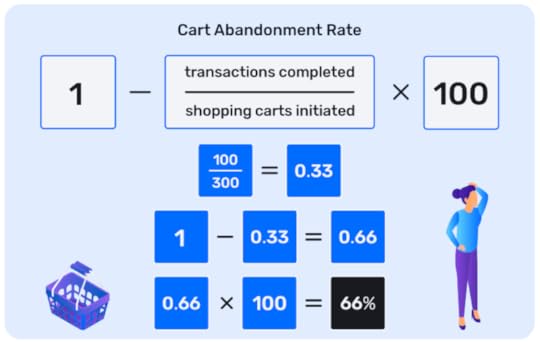
Source: Bolt
The Most Common Reasons for Cart Abandonment
Although cart abandonment is ideally something merchants would like to completely eradicate, that will never be the case. This is simply because there are too many variables out of your control, including human behavior, a person’s location, or their income.
Furthermore, many shoppers aren’t entirely serious about buying. They may even be adding items to the cart to compare prices with other stores. But even if shopping cart abandonment cannot be completely prevented, it would be best if it could be lessened. However, to know how to reduce cart abandonment, we first have to acknowledge the most common reasons for the issue in the first place.
According to the data below, there are a wide range of reasons for cart abandonment. Anything from a bad returns policy to being forced to create an account can deter customers from finalizing their purchase.
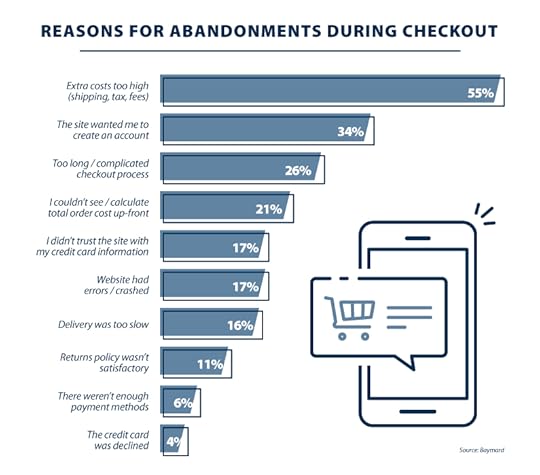
Source: Baymard
So what are the best ways to combat shopping cart abandonment? Here are our top eight proven methods.
1. Offer Free Shipping and Returns
Free shipping and returns can be a great incentive for someone to finalize their purchase, rather than abandoning their cart. Many of those browsing and considering purchasing will be deterred by sudden additional fees being added once they reach the cart, especially if the shipping charges are on the higher side. By offering free shipping, you take away the deterrent and actually add another incentive to complete the purchase. Free returns also add an incentive to complete the purchase, especially for those who are unsure if the product is right for them. A free-returns policy is particularly effective when selling clothing online, as people can try on multiple sizes at home, without the detrimental effect of additional cost if someone doesn’t fit.
2. Allow Guest Accounts
Allowing guest account when purchasing is a great incentive for potential buyers. Guest accounts make first purchases a little less of a hassle for the customer, but more importantly, they feel far less intrusive. This is because they only ask for the essential details to complete the purchase and deliver the product. After a guest account purchase is made, you can still offer incentives of your own to encourage the customer to sign up completely, so you don’t really lose anything from the transaction. If anything, a customer will be more likely to sign up and buy again from your brand in the future, dueto the ease of the purchasing process.
You can even take guest account purchasing one step further and allow sign up through social media. This will speed up the sign up process for the customer, as they are probably already signed into social media, and it will auto-fill the majority of the data form for them.
3. Retarget Your Customers
Many customers will leave their shopping carts with the intention of coming back to it at a later date. Online shopping is often used for its convenience, so this is a fairly frequent occurrence. However, customers will also frequently forget about their previous shopping cart completely. This is when retargeting is useful. By retargeting customers who abandoned their shopping cart, you may reignite their desire to make the purchase. With the help of an effective data feed optimization service, you can narrow the best options for retargeting by the value of a product or even what is on sale. This may help to increase profitability when you advertise through Google text ads, email, or dynamic ads.
4. Optimize Your Site for Mobile and Tablet
By optimizing your website for mobile and tablet, you will not only get more customers completing their purchase, but you will also get more customers in general. In fact since 2017, around 50% of all online purchases have been made through mobile or tablet. This means having an effective mobile site is essential.
On smaller screens, the desktop version of a website can often be difficult, if not impossible to use without optimization. This deters customers from browsing through your website, which means purchases are far less likely to be completed. If you optimize your website for other platforms, each page will be suited to the downsize in screen. This will make it easier for customers to browse, enter address details, and payment details.
5. Offer Numerous Payment Methods
As many online stores attract customers from all over the world, a diverse range of payment options is essential. This is because customers will not necessarily have the same payment habits, income levels, and may not even have access to the same payment brands as one another. By offering numerous forms of payment, customers will be more likely to complete their purchase. Useful payment methods that may benefit you and your customers include
Credit/debit cards
Secure third-party payment options, such as Securepay or Stripe
Gift cards or discount vouchers
Staggered payments via one of the payment methods (e.g. 3 installment payments of $20 instead of $60)
Apple or Google Pay
PayPal
6. Ensure the Shopping Experience Is Secure
If a customer is going to enter payment details into your website, they will want to know if it is secure. Try to make sure your security is clear and visible with an SSL seal, especially on the payment page. Otherwise, customers may abandon their cart simply because your site doesn’t seem safe, even if it is. Visual factors help to build up trust between the brand and customer, so this will also make customers more likely to make future purchases.

Source: Krishtechnolabs
7. Display Buyer Reviews and Support Access
Displaying your buyer reviews can help customers better understand the product they are buying, and if it is right for them. There are numerous platforms available where you can collect product reviews. It is important to pick the one that makes the most sense for your business.
This will ensure only customers who are truly interested in your product are adding it to their cart. It will also help customers trust the brand, and this in turn makes them more likely to complete a purchase, especially if the feedback is good. And even if it isn’t, the brand is being open about this, which suggests that honesty is a brand value. This reflects well with most customers.
If negative feedback is left, this is still an opportunity. A good brand response to negative feedback can turn a negative review into a positive one. It can get the negative reviewer to shop with you again, whilst also convincing others that you are trustworthy.
Good support is also useful beyond reviews, as customers can find fast answers to their questions or issues with products. Like reviews, easily accessed support such as email or live chat can help build trust, help your site demonstrate social proof, and ensure customers finalise their purchases instead of abandoning their cart.
8. Allow Easy Cart Maneuverability and Product Savings
By allowing customers to freely move between browsing and various stages of their cart (checkout, enter payment details, etc.) customers will be more inclined to complete their potential purchases. This is because it gives customers an extra opportunity to check products, information, and more, which helps them confirm their decisions.
If you also allow customers to save the products in their cart for a later date, they will also be more likely to complete their purchase. In many cases, people who buy online do so because it saves them time and it is convenient. However, some customers will abandon their cart if they get distracted by something more important or have to do something else. By allowing customers to save their cart, they can come back to their potential purchases at a later date when they have a chance.
Conclusion
Unfortunately, shopping cart abandonment can never be completely avoided. However, by following these proven methods, it is likely that you will see an increase in customers completing their purchases. Make sure to build on customer loyalty and keep your website up to date. Customer care, security, and accessibility are all big factors in ensuring your customers are happy to continue shopping with you from choosing the product, all the way through to completing the final purchase.
By Jacques van der Wilt
December 3, 2020
How to Boost Channel Subscribers and Engagement Using YouTube Giveaways

DEC. 3, 2020

Almost all major YouTube channels have, at some point, hosted a giveaway. Giveaways are fun, interactive, and engaging campaigns that can produce huge growth.
The main benefit of a giveaway is its ability to boost subscribers, engagement, and views instantly. A boost in any of those can directly translate into more income and massive sponsorships. Let’s take a closer look at a few YouTube giveaway examples.
YouTube Giveaway Examples
Everyone from Dude Perfect to James Charles is hosting YouTube giveaways. While many of these kind-hearted YouTubers may love giving away free stuff, there are some real benefits behind their actions. Here are the two main benefits of YouTube giveaways: They increase channel subscribers and engagement.
The Dude Perfect
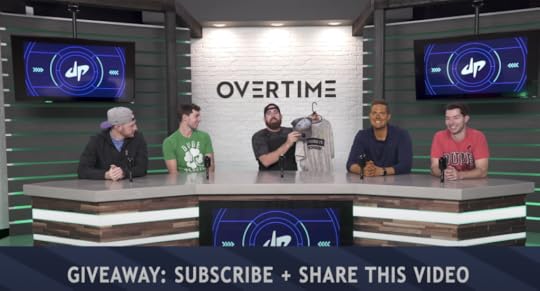
Dude Perfect / YouTube
The Dude Perfect merch giveaway (pictured above) is an excellent example of how YouTube giveaways generate subscribers and engagement.
To enter the giveaway, users had to subscribe to Dude Perfect and share their giveaway announcement video. This means that all entrants to the giveaway will become Dude Perfect subscribers and will instantly engage with them by sharing the video.
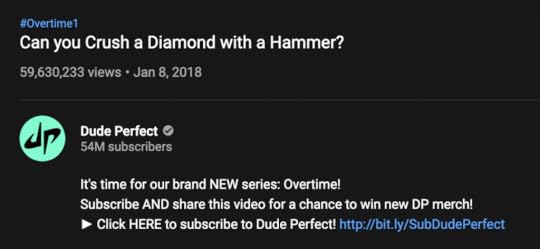
The result of this simple giveaway is insane. Their giveaway video has more than 59 million views and 100 thousand comments.
The giveaway was also hosted at the launch of their new series. Giveaways are excellent campaigns for creating hype around the launch of a new product or service.
James Charles
On August 28, 2020, James Charles announced a $100,000 Giveaway in a video uploaded to his YouTube channel. Users had to subscribe to James’s channel and follow him on all of his social media accounts to enter.
This is an excellent strategy for using a single YouTube giveaway to grow your subscribers and followers on other social media platforms.
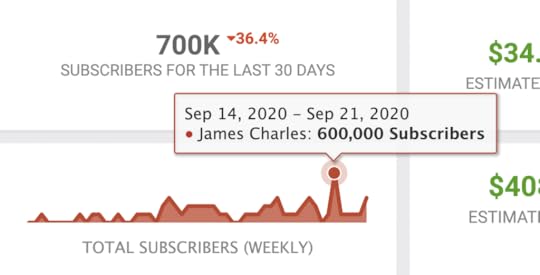
Source: Social Blade
In the month that followed the giveaway announcement, James’s channel peaked in new subscriber acquisitions, the highest being 600 thousand new subscribers in just a week!
Now that you understand the benefits of a YouTube giveaway, let’s go over how you can host your own giveaway to boost subscribers and engagement.
Hosting a YouTube Giveaway
The concept of a giveaway is simple: You sponsor a prize, ask people to subscribe to your channel to enter, and then pick out a random winner. However, there is a lot that can go wrong, especially without proper planning. If you want your giveaway to exceed your expectations, then you will have to carefully plan and execute these three crucial areas of your giveaway:
Your goals
Your prize
Launching and promoting the giveaway
By carefully planning the above, you will have a better idea of structuring and promoting your giveaway. Let’s take a closer look..
Determining Your Giveaway Goal
For most brands, hosting a YouTube giveaway is a means of boosting its channel subscribers. However, you can use your YouTube giveaway to achieve other (or multiple) goals, as well. Going back to the James Charles giveaway, the entry method required users to follow James on all of his socials.

Source: Vyper
His giveaway helped him grow his social media followers, as well. You, too, can host a giveaway that achieves multiple goals. Some examples of popular goals include:
Growing email subscribers: Ask users to submit their email addresses to enter your giveaway.
Increasing website traffic: Direct traffic from your YouTube video to your website to fill in the giveaway entry form.
Software or app download: You can insert a link to the Play or App Store in the description below your YouTube video and request users to download your app to enter the giveaway.
Once you have decided on a goal, you can then carefully structure your giveaway to achieve that goal. If you want your giveaway to attract a large targeted audience, you will have to choose an awesome prize.
Choosing a Prize
When a person announces a giveaway in their video, the first thing a viewer wants to see is the prize. The prize is one of the most crucial aspects of a YouTube giveaway. People can be hesitant to submit their personal information to enter. Some people will only subscribe to your channel if your giveaway is “worth it.” Offering a prize that your audience finds valuable is the best way to convince them to take action and enter.

Source: Vyper
Lew from Unbox Therapy (above) gave away 106 smartphones. This campaign has since generated more than 14 million views on the announcement video.

You could say that his video received a massive amount of views because of how massive the prize is. So, if you want similar success with your YouTube giveaway, you should also offer a huge prize, right?
Using a generic prize like an iPhone might seem like an excellent way of attracting a broad audience. However, it’s possible that most of the leads you attract will only be interested in the iPhone and not your brand. An iPhone may increase the number of participants, but it will also generate a huge amount of poor-quality leads.
Finding Your Audience
It’s always best that you choose a prize that will attract your target audience. For example, the popular gaming franchise, Fortnite, can attract an audience of passionate gamers by offering gaming consoles and controllers as their giveaway prize.
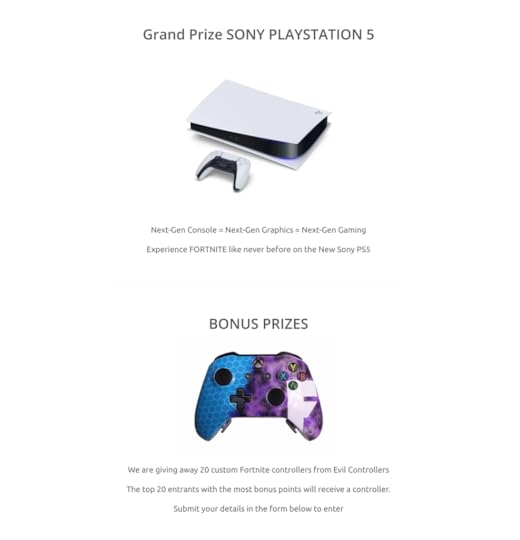
Source: Vyper
Such prizes are almost exclusively desired by gamers and will attract that crowd. It won’t necessarily attract other audiences, like photographers or health-conscious people. If your brand wants to target photographers, then you will have to choose prizes like drones or photo-editing software.
Still, having trouble deciding on a prize? Perhaps you can ask your customers what they think will be a great prize for a giveaway.
Launching a YouTube Giveaway
Launching a bonafide YouTube giveaway is as easy as filming and uploading a new video to your channel. When creating your giveaway, always ensure that the giveaway video has the following:
A thumbnail with the prize
A video that shows off the price
Dates related to the giveaway
The entry method and how a winner will be chosen
All of the above information placed into the description box under the video
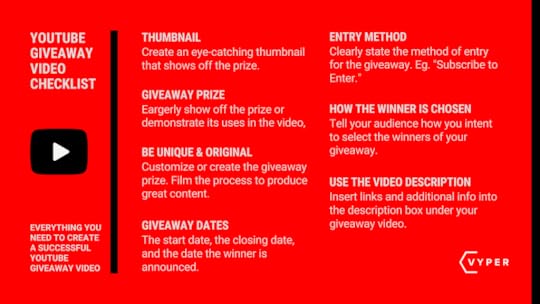
Source: Vyper
Once your video has been uploaded, your current subscribers will discover it and enter the giveaway. By asking people to share your video, you will increase your chances of getting more people to watch it. If you feel that not enough of your subscribers found your video, you can create a post on YouTube to announce your giveaway.
Promoting a YouTube Giveaway
Solely relying on the YouTube platform may not be enough. Remember, Giveaways are massive campaigns that can attract audiences from any platform. Because of this, it’s recommended that you promote your giveaway on all of your existing marketing channels (social media, email, blog, etc.).
Social Media
You can share your YouTube giveaway on all of your social media channels to get your followers to come over to YouTube and subscribe.
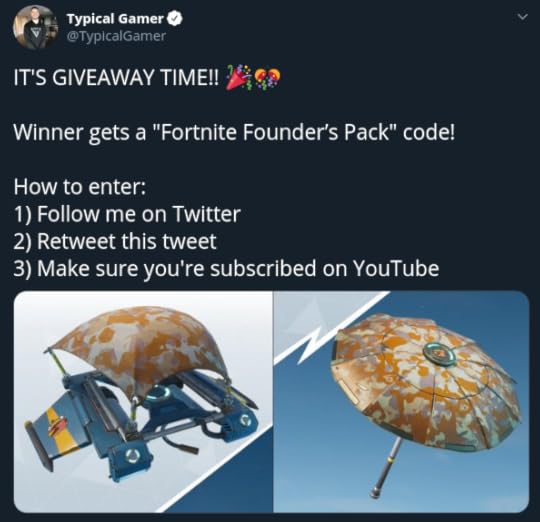
Alternatively, you can simply create a post (like the one above) with instructions on how to enter. If you use a Twitter automation tool, you can easily schedule tweets that will be published during the course of the campaign.
Giveaways are the perfect excuse for you to email people you know. You can send out the following emails:
An announcement email informing people about your new giveaway
A reminder email to let people know how much time they have left to enter
An announcement email officially naming the winners while also thanking everyone who entered
All emails can have links to your website or a page with more information on the prize. This is the perfect opportunity to increase website traffic.
If you don’t have a website, you can always insert links to your YouTube channel to drive traffic over there. Using an email marketing service will be ideal in scheduling the above emails so you don’t forget to send them out during the campaign.
Blogs
Blog posts are excellent for giveaways because of the amount of information you can insert into a post. You can easily embed your YouTube giveaway video into a blog post.
You have more options to promote your YouTube Giveaway when hosting it on a blog. You can use chatbots, banners, and pop-ups during the campaign to inform visitors about your giveaway.
If you don’t have a blog of your own, you can submit a request to be featured on a relevant blog. Alternatively, you can collaborate with a blog to co-host your giveaway.
The benefit of partnering up with other brands is that you can both help each other promote the giveaway.
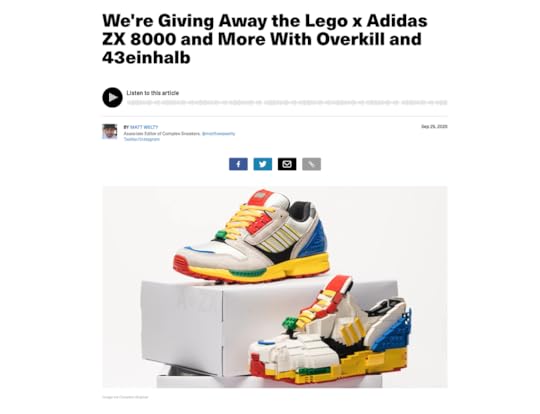
Source: Vyper
In the giveaway above, Complex teamed up with Overkill and 43einhalb to host a giveaway that was featured on the Complex blog. Each brand shared the giveaway on all of their socials while also tagging each other. Tagging a partner in your post will help your audience discover and follow them. They can also tag you in their social media posts so their followers can discover you.
TL;DR
YouTube giveaways are viral promotional campaigns that can easily integrate into your channel and social media. Giveaways are fun and make for excellent content.
Hosting a giveaway has proven to be very beneficial for YouTube channels looking to increase subscribers and engagement. Brands sponsor prizes that participants can potentially win once they have subscribed to their YouTube channel. Some brands take things even further by structuring their giveaways to generate email leads and social media followers.
By Jack Paxton
December 1, 2020
10 Instagram Marketing Tools That’ll Build Your Brand Following

DEC. 1, 2020

Kate Torline / Unsplash
According to the Global Web Index, on average, most people spend over two hours every day on social media platforms. Of these, Instagram has over 1 billion monthly active users. With this amount of active users, you must identify ways to promote your brand, and marketing tools can help simplify that process.
Choosing the right Instagram marketing tool, to a large extent, influences how fast your brand gains a following. Thankfully, most of the great marketing tools for Instagram are either free or affordable. In this post, you’ll learn about great Instagram marketing tools and their importance to building a brand following.
Why are Instagram Marketing Tools Important for Brand Following?
Instagram is a popular social network capable of driving business and brand growth. Gone are the days when it was only for scrolling through pictures, memes, and food content.
Instagram marketing tools provide additional features and functionalities, such as scheduling posts, suggesting hashtags, and providing performance analytics. These features help you market your brand on Instagram effortlessly, increase your following, and engage your audience. Some of these features include automated publishing, smart scheduling, and insightful analytics.
What Are the Best Instagram Marketing Tools?
According to a survey done by Facebook, 78% of the users believe that Instagram brands are popular, and 74% believe that brands are relevant. Evidently, Instagram users are very open to brands marketing themselves on the platform. Here are some great Instagram marketing tools that will help build your following.
1. Sendible
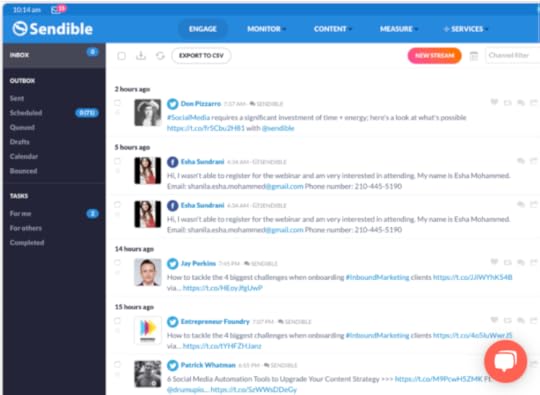
Sendible is a well-known social media management tool that allows users to schedule images and videos to directly post on Instagram. With this tool, you can fix a schedule for your posts for certain times or add them to the queues. For just $29 per month, you can enjoy this app and its benefits. All the content you scheduled previously on Instagram and other social media platforms are displayed on a calendar. This allows you to tweak your schedule quickly. Other features of sensible include
A report builder for building client reports
A built-in social media inbox for managing mentions and comments
A built-in CRM with team management
2. Combin Growth
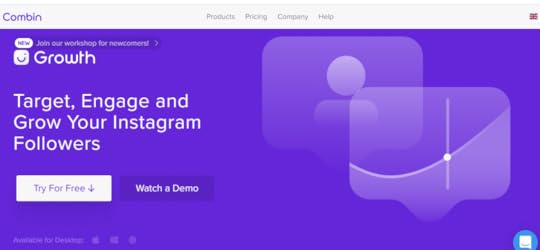
Combin growth is an Instagram marketing tool that helps you increase your brand’s number of followers. It has tools such as following analysis and interaction features. All of these features help you gain genuine Instagram followers while interacting with your current Instagram audience. With enhanced machine learning, this tool helps you analyze and identify the accounts and posts that are not performing well. With the Combin growth tool, you can
Find people who aren’t following you back.
Identify your target audience on Instagram.
Identify Instagram influencers for your account.
Monitor audience activity and growth.
Style your Instagram grid layout.
Manage multiple accounts.
3. Tailwind
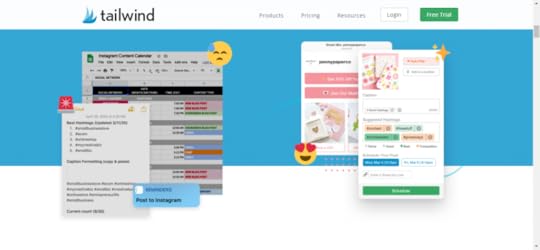
Tailwind is a powerful social media scheduling tool that focuses on visual social networks, such as Instagram and Pinterest. It offers brands scheduling functions and powerful analytics features, including trend reporting, profile metrics, and benchmarks of virality and engagements. Additionally, Tailwind offers these capabilities and tools:
Direct posting to Instagram
Hashtag recommendations and hashtag lists
The chrome browser extension for regramming
SmartSchedule features that will pick the best time for you to post your content
Create a branded landing page for free
Easy analytics for profile performance, posts, and summary reports
4. Onlypult
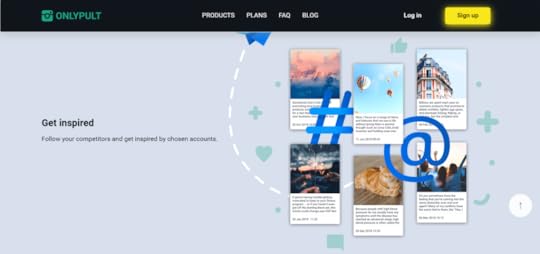
Onlypult is a social media management tool with varied functions such as teamwork, image- and video-editing. This tool can be used to post content to blogs, social media, and messengers. It enhances your functionality; allows you to create multiple links, micro landing pages, and boost sales. With Onlypult, you can manage multiple accounts from only one window at a time, without having to switch.
Here are some of Onlypult’s features:
Onlypult provides cool features such as calendar, analytics, hashtags, image and video editor, and planner.
It lets you work with multiple accounts simultaneously.
It helps you analyze volume, growth of followers, and the best time to publish.
It has features for automatic post deletion.
This tool allows you to schedule posts and publishes them in real-time.
Gives your social media manager access to publish content without sharing a password.
Allows you to analyze trending hashtags.
It also provides features such as scheduling posting, analytics, and hashtag suggestions, to help you market your brand.
5. Unbox Social
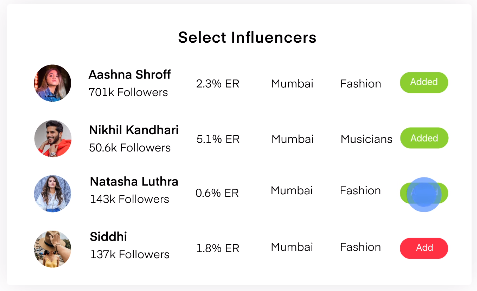
Unbox Social is a social media marketing tool that helps you with Instagram analytics and competition tracking. Its dedicated features provide you with insights into your brand’s Instagram following. With this tool, you can track just how well your posts and stories are performing.
It also helps you discover vital insights on your engagement, post reach, and metrics on your audience. It does this using an all-encompassing dashboard. This tool helps you track everything concerning your social media followership, from content to video posts, to all your stories while you track important metrics.
You can also get detailed insights into every marketing metric. Here’s what this platform can do for you:
Provides you with an assessment of your competitors performance.
Analytics feature provides you with highly detailed information devoid of audience sentiments.
The data obtained can be used to make insightful decisions on brand growth.
Helps you identify important Instagram influencers for your brand. These influencers can help expand the reach of your brand campaigns.
6. Buffer
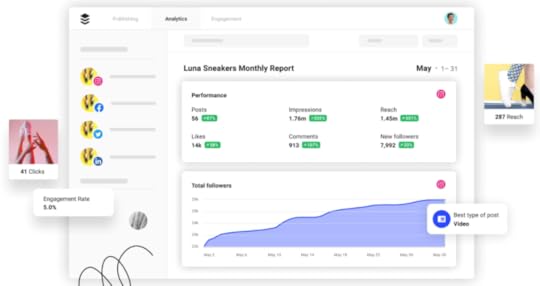
Buffer is a known go-to Instagram marketing tool for scheduling posts. It ensures that the marketing of your brand and products are stress-free and as streamlined as possible. With Buffer, you can schedule posts automatically for Instagram. All you need to do is attach pre-written copies of your video and photo content to the queue.
Other features of Buffer include
Scheduling your Instagram posts and freeing up time for you to focus on other important aspects of your business
Scheduling posts using the social media calendar tht will automatically be posted on Instagram on the allotted date
Increasing the efficiency of your brand’s Instagram marketing efforts
7. LeeTags
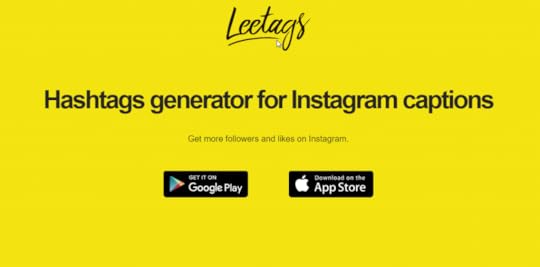
Leetag is an amazing Instagram marketing tool that analyzes hashtag trends and generates several hashtags for analysis. The hashtags generated are relevant, special, and dedicated to improving your brand’s visibility.
With this tool, you can track every comment related to your brand or hashtag and analyze how your audience interacts with the tags. Other features of Leetags include
Reports relating to brand followership, reposts, audience statistics, and more
A fully integrated cloud service
Tools for organizating and maintenaning your Instagram account
8. Hashtagify
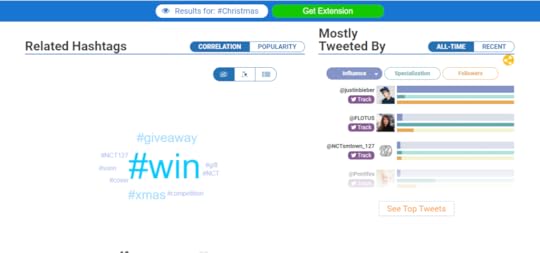
Hashtags are important tools that improve your visibility and ability to be discovered on Instagram. Since hashtags are important for your brand’s visibility, you will need a reliable tool to create the best hashtag strategy. Hashtagify helps you do exactly that.
Due to the ever-increasing content pool on Instagram, hashtagify helps you automate the creation of relevant hashtags. This promotes brand followership.
Some great features of Hashtagify include
The ease of finding hashtags relevant to your content
A search tool for finding different hashtags and exploring their popularity, trends, and correlations.
Instant hashtag suggestions for Instagram
9. Later
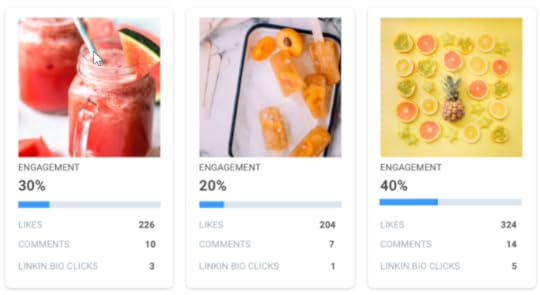
Later is one of the few marketing tools that started as an Instagram scheduling tool. It has since evolved from merely scheduling to other functions that are necessary for effective marketing. Later allows you to schedule Instagram posts and content to be published later (hence the name) and keep track of events via the platform’s calendar.
Some cool features of later are
The ease of scheduling Instagram content
The ease of content organization
Affordable paid plans
Unlimited data download
10. InstaGrowth Ninja
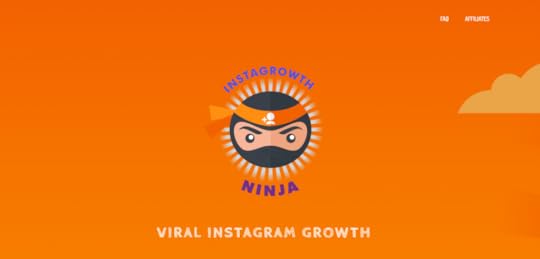
This tool is best suited to small- and medium-sized businesses. InstaGrowth Ninja plays the role of a social media marketing manager. It analyses your current trends and brainstorms innovative ways to achieve a higher following. The app alsos analyses what people are talking and hashtagging about.
Here are other things InstaGrowth Ninja can do:
It is capable of sending out over 30 DMs.
It interacts with users round the clock.
It is capable of following close to 400 people every day.
11. Hootsuite
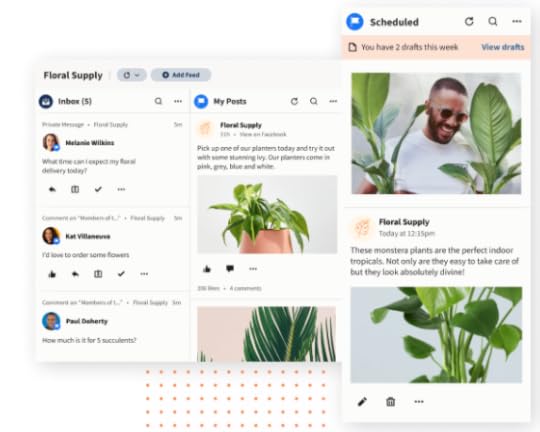
Hootsuite is a scheduling tool that helps simplify the task of posting on Instagram. Your content (images, videos, text, and Stories) can be posted directly without fuss from your Hootsuite dashboard. Once the post has been published online, the tool allows you to respond to comments directly and check the post from the dashboard.
The features of Hootsuite include
Creating high-quality stories using images and videos provided
Scheduling posts and publishing them at the agreed time
Monitoring customers, trending hashtags, competitors, etc., effortlessly.
Measuring the performance of your posts and analyzing your strategy
12. Iconosquare
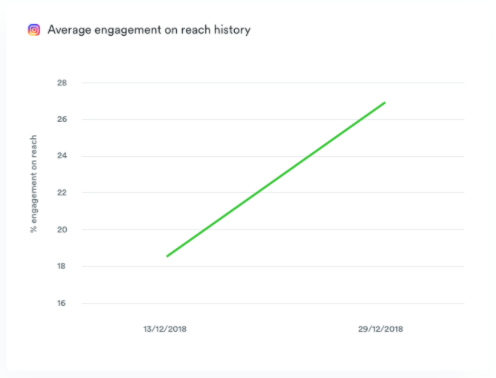
Iconosquare is a social media analysis tool that can be utilized for Instagram. It helps with the analysis of your Instagram posts and overall brand followership. The information obtained from the analysis provides you with insights on the best time to post, the posts with the most engagement, and more.
Aside from aiding with analysis, you can also schedule posts to publish, monitor mentions, track high-performance tags, and keep an eye on comments. Other features include
Real-time performance update
Hashtag tracking
Measurement of brand followership
Tracking of influential posts and profile spotting
Conclusion
Instagram is a well-known social media platform with an average of one billion active followers a month. To take advantage of this audience, you must select the appropriate marketing tool. Some Instagram marketing tools that help improve brand following are Combin growth, Sensible, Hootsuite, Later, and Hashtagify. These tools provide you with various features to make your marketing easier and more efficient.
By Grace P.
November 26, 2020
How to Edit Stock Photos for Facebook Ads

NOV. 27, 2020

Cottonbro / Pexels
Facebook users come across a boatload of ads daily. To stand out and attract enough eyeballs to your business, your ads need to glow with eye-catching images that would cause your target buyers to pause and click instead of scrolling away.
Fortunately, you don’t have to invest heavily in a high-end camera to take beautiful ad-worthy photos. You also don’t have to pay someone to edit or design your images every time you decide to run an ad. All you need is a stock photo, an inexpensive editing tool, and a detailed tutorial to guide you.
In this easy-to-follow guide, you’ll discover where to find high-quality stock photos for your Facebook ads and how to edit them with Colorcinch in under 10 minutes.
Where to Find Stock Photos For Facebook Ads
There are hundreds of places to find stock photos. Regardless of your budget size and the image style you seek, you’ll always find a stock photo site that meets your needs. While the list is vast, here are five best places to get quality stock photos for your Facebook ads:
Pexels (Free)
Pixabay (Free)
Unsplash (Free)
Gratisography (Free)
Shutterstock (Paid)
All the free directories above feature CC0-licensed images, which permits you to freely modify images downloaded from them without running into copyright issues.
How to Design Stunning Facebook Ad Images Using Colorcinch
Step 1: Choose a stock photo.
The first step to creating a Facebook ad image is to find a beautiful picture. You want to ensure that you choose a high-quality photo captured from an excellent angle.
Let’s assume that you run an online clothing store that you’d love to promote via Facebook ads. The first thing to do is to visit one of the stock photo sites listed above and search for a term related to what you intend to promote. For an e-commerce store selling clothing items, you can search for “clothing store,” “clothing,” “shirts,” or any other term related to clothing.
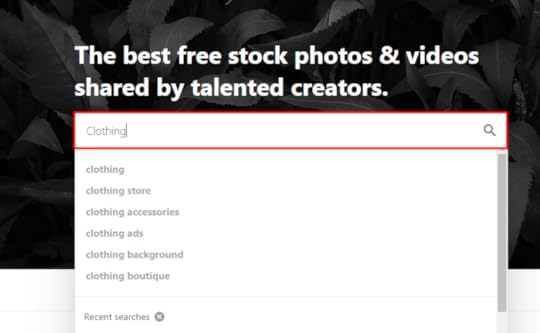
Once your search returns results, navigate around to reveal more photos, then pick the one you find attractive. Since Facebook has a recommended resolution of 1200 x 628 pixels for News Feed ads, ensure that your photo isn’t smaller in width or height.
Step 2: Upload your photo.
Upload the stock photo you just downloaded to Colorcinch (or any other photo-editing tool). You can do this on Colorcinch by clicking on the upload button.
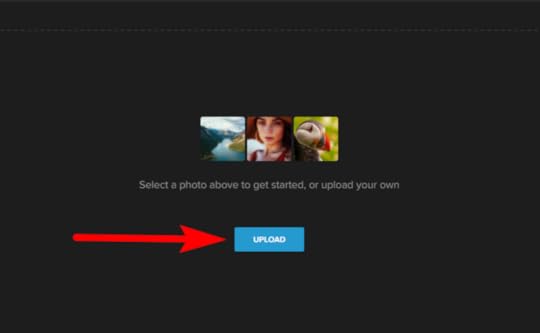
Step 3: Crop your photo.
There are several recommended Facebook ad image dimensions, depending on the type of ad you intend to run. And it’s most likely that your stock photo’s size won’t fit Facebook’s recommendations perfectly. So, to ensure the image isn’t stretched or squeezed when your ad goes live, you have to crop it.
To crop an image on Colorcinch, navigate to Edit > Crop.
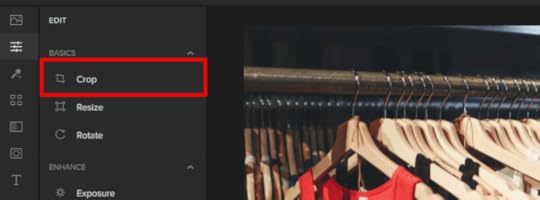
To run a News Feed ad, you’ll have to crop the photo to 1200 x 628 pixels. To do this, choose Freeform (from the drop-down options under Aspect Ratio), disable Lock Aspect Ratio, and then input the width and height as shown below.
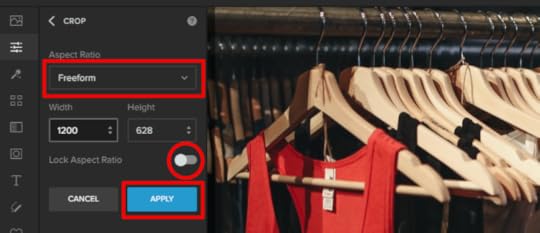
Decide on what region of the photo to crop, then click APPLY.
Step 4: Add filters.
Photo-brightening filters perform much better than color-dampening ones when creating Facebook ad images. Remember, the goal is to transform your stock photo for better visibility.
To add a filter, navigate to the Filters tab and try out a couple of options. Colorcinch has loads of unique filters, so settling for one might be somewhat of a (good) problem.
For this guide, we’ll be applying the Simple filter. You’ll find it in Filters > Simple.
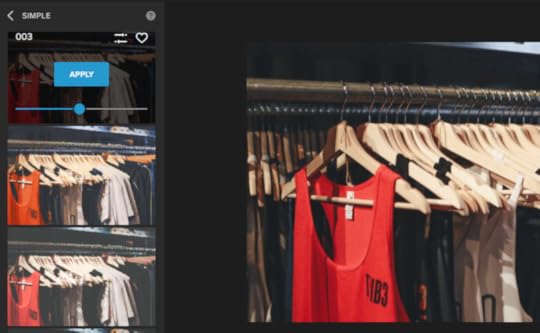
Step 5: Brighten things up.
To brighten your stock photo, go to Edit > Enhance > Exposure.
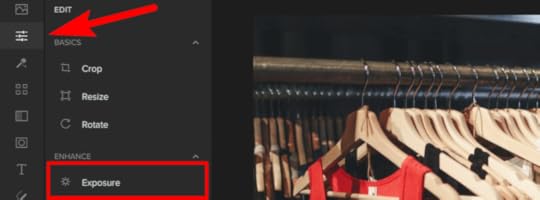
After adjusting some settings under Exposure and Details (following the instructions in our previous tutorial), we are now left with a glowy and sharp photo, as you can see below:

Step 6: Add text.
For a while Facebook restricted the number of text advertisers could use on their ad image. But with the recent change in the ad policy, you no longer have to calculate your ad’s text-to-image ratio every time. Just ensure you don’t choke up your ad photo with large, intrusive text.
Colorcinch text tool allows you to add text of different sizes and beautify them by choosing from the more than 50 fonts available. You can also modify text color, add a shadow, an outline, and even a custom background.
To include text, navigate to the Text tab and click on Add Text. Once the textbox appears, clear the default auto-generated text, add your new text, and then modify other settings as you desire.
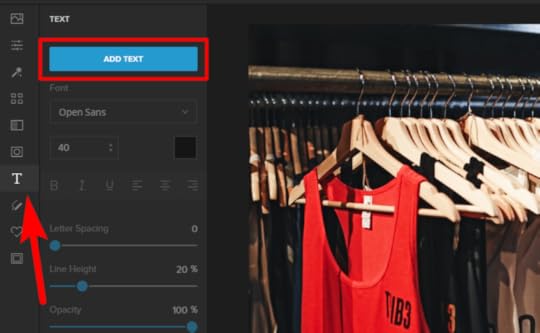
Here’s what the image looks like after enabling Shadow and Outline and applying the Comfortaa font:
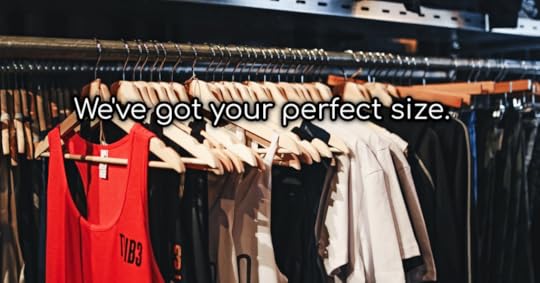
Step 7: Include a CTA button.
A call-to-action (CTA) button can make your image more attractive and attention-grabbing, and therefore amp your ad’s performance. Fortunately, you can easily add CTA buttons (and other graphics) to any image. Here’s how to do it: Go to the Graphics tab, type in your desired graphic (e.g., “shopping cart icon”) in the search bar, and then hit ENTER. You can also click on the square icon (circled in the image below) to search by category.
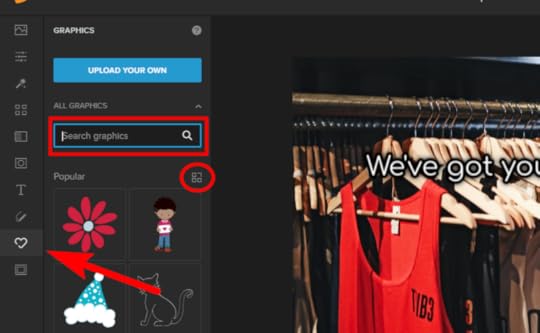
To add a square or rectangular box (which will serve as the CTA button), search for the shape (or navigate to the Shapes category). Once you find the shape you need, drag or click on the graphic to add it to the image, then stretch, shrink, or move it however you like.
After merging some square boxes and adding extra text, here’s what our final ad image for the online clothing store looks like:
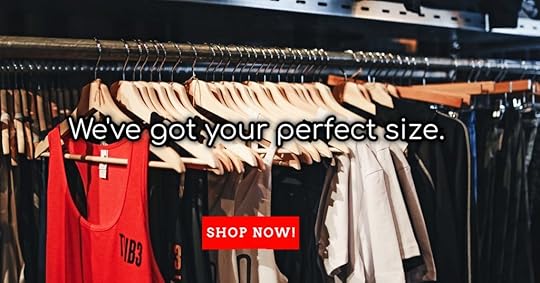
Additional Tip: You can also add a logo to your Facebook ad image. To do this, go to the Graphics tab, click on the blue button, then import the logo from your PC.
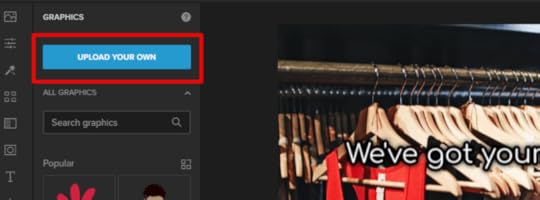
Step 8: Save and download the image.
Once you’re done editing, click on Save > My Computer on the right top-corner to download your final image.
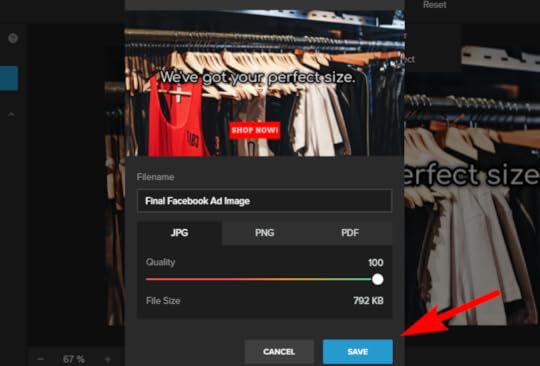
Grab Your Prospects’ Attention with Your Irresistible Images
One of the major components of high-converting Facebook ads is an eye-catching image. So whether you edit your stock photo using Colorcinch or other online tools, ensure your final design is bright and super attractive, so your ad won’t drown in the busy News Feeds of your prospects.
November 24, 2020
How the “Task Assassin” Founded the Biggest Facebook Ad Agency in Hollywood
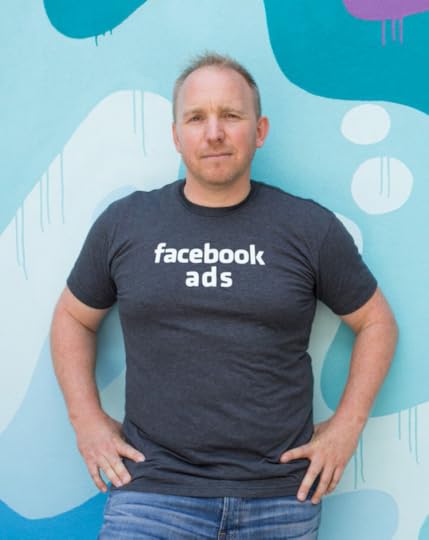
NOV. 25, 2020
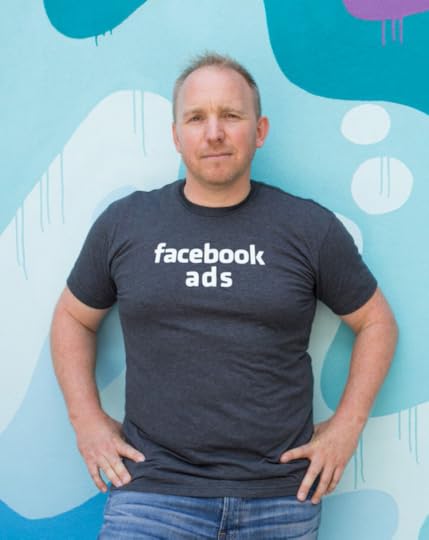
In an interview with Native Influence, AdvertiseMint CEO Brian Meert goes deeper into his background: what inspired him to start his ad agency in Hollywood, the challenges and successes he’s faced in his career, and how he got the nickname “task assassin.”
When asked how Meert got into the marketing industry, the CEO talked about his first business in college:
I first began running Google Adwords campaigns after I started a business in MBA school called Pocket Goals. I used the cafeteria money my school had given me to run paid ads to increase sales. Some days were great, other days had no sales, and I immediately feared not being able to eat. I’ve always taken that approach with all accounts we manage at AdvertiseMint — we spend each dollar like it’s our own. Ten years after MBA school, when Facebook launched Ads Manager and Business Manager, allowing ads to appear in News Feeds, I decided to quit my job as a marketer for a financial company after seeing Facebook’s ad targeting options. I knew it was going to be big. When I left, I started to build my agency, AdvertiseMint. That’s how I got into Facebook advertising.”
Meert also talked about how he transitioned from Google Adwords to Facebook ads:
I was inspired to build an agency focusing on Facebook ads because when the ad platform first launched, I was very impressed with the ad targeting options available. You could target virtually anyone from any demographic, background, interest, and location. At that time, I thought it was incredibly revolutionary. I saw the future of advertising. I knew it was going to be big, so I quit my 9-5 job and created an agency focusing on Facebook ads. I knew there was a market for it because the platform was still so new at the time, and there weren’t many experts in the industry. Although my agency focused solely on Facebook ads, I did envision covering more advertising platforms. We’ve since expanded our services to Amazon advertising as well.”
In the interview, Meert also reveals what’s in store for the ad agency, advice to young entrepreneurs, and the emerging trends he’s most excited for.
You can read the full interview of Brian Meert at Native Influence.



